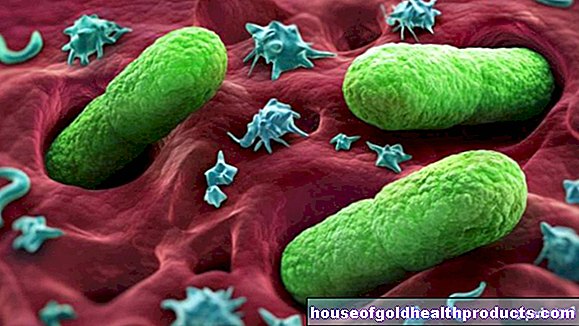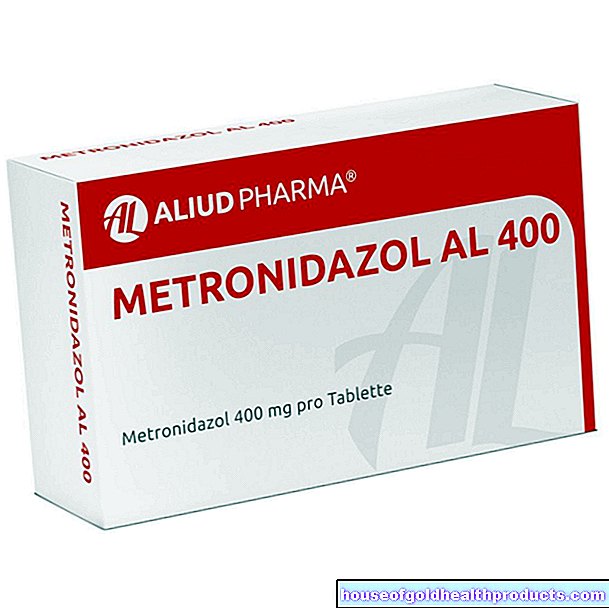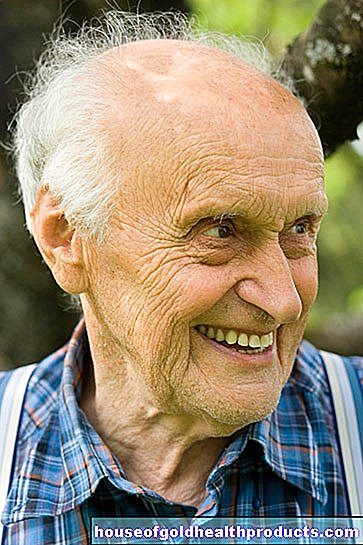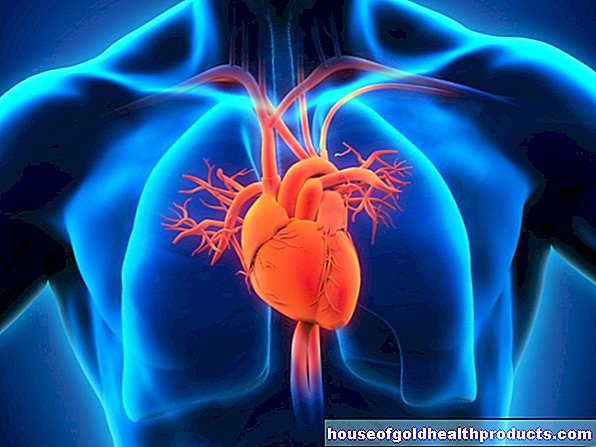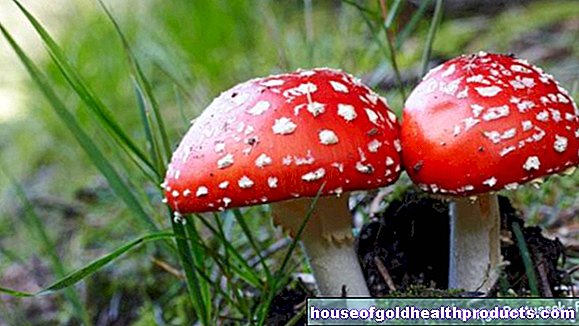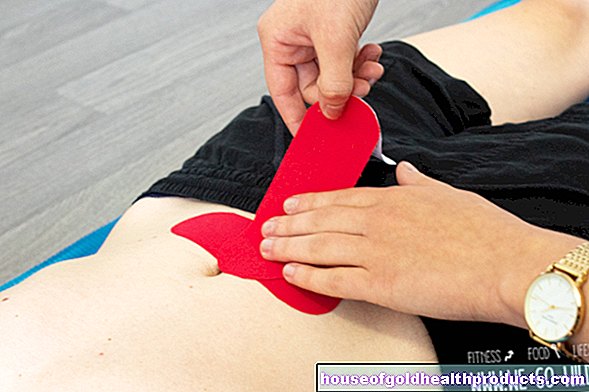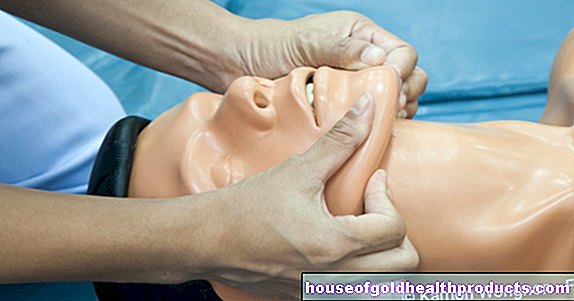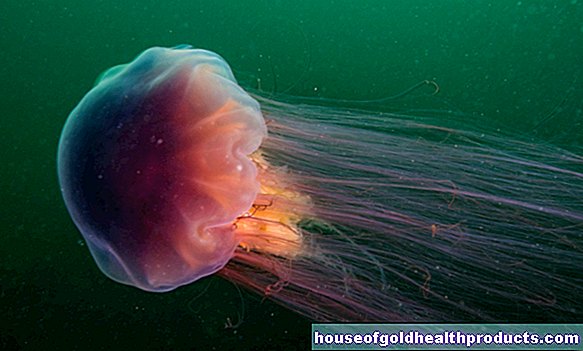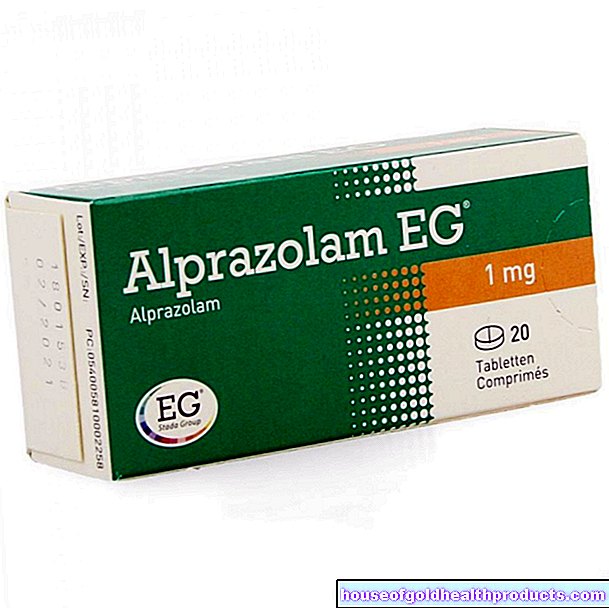Naloxone
All content is checked by medical journalists.Naloxone is an antidote for opioid poisoning and is also given for painkiller-induced respiratory depression after an operation. The active ingredient belongs to the group of pure opioid antagonists. By occupying the docking sites (receptors) of opioids (such as heroin, methadone) in the body, it inhibits the opioid effect. Here you can find out everything you need to know about the use, effects and side effects of naloxone.
This is how naloxone works
Naloxone is an active ingredient similar to morphine. It can bind to any opioid receptor so that opioids (such as heroin, methadone) can no longer dock and develop their effects.
Blocking the receptors is, however, only competitive. This means that a sufficiently large amount of opioid can displace the active ingredient from the receptors. In order to be able to treat an overdose with opioids, sufficient naloxone must be administered.
Despite the occupation of the opioid receptors, the active ingredient has no opioid-like effect and does not lead to any psychological or physical dependence.
The active ingredient is also available in combination with the opioid pain reliever tilidine (for oral use). When used orally, naloxone has no effect because it is quickly inactivated in the liver after absorption. If the tilidine-naloxone mixed preparation is improperly injected by heroin addicts, naloxone unfolds its effect and inhibits the opioid effect of tilidine.
Uptake, breakdown and excretion of naloxone
The active ingredient is given directly into a patient's vein. It is quickly distributed through the bloodstream and quickly penetrates the brain. The duration of action is very short at one to four hours - the active ingredient is quickly metabolized in the liver. Within one to two hours, half of the active ingredient has already left the body with the urine. Due to its short duration of action, naloxone often has to be re-injected in opioid poisoning.
When is naloxone used?
Naloxone is recommended for any type of overdose or intoxication with opioids (such as heroin or methadone). Reduced breathing (respiratory depression) after an operation with opioid pain relievers (opioid analgesics) can also be treated with the active ingredient.
This is how naloxone is used
So that the naloxone effect sets in as quickly as possible, the active ingredient is introduced directly into the patient's bloodstream.
For the treatment of respiratory depression after an operation, adult patients usually receive 0.1 to 0.2 milligrams of the active ingredient every two to three minutes until adequate respiratory function is restored.
In opioid poisoning, 0.1 to 0.2 milligrams are also given every two to three minutes up to a final dose of four to ten milligrams.
The maximum dose of 24 milligrams of naloxone per day should not be exceeded.
In children, the dosage is based on body weight.
What are the side effects of naloxone?
The most common side effects of naloxone are nausea, vomiting, increased blood pressure, acute withdrawal syndrome and - in operated patients who have received an opioid pain reliever - a reversal of the analgesic effect.
Some people also develop irregular heartbeat, allergic reactions, skin reactions, tremors (tremors), excessively fast, deep breathing (hyperventilation), or seizures.
What should be considered when using naloxone?
Naloxone should not be given in opiate withdrawal syndrome. Opiate withdrawal syndrome occurs after stopping an opioid if the person has three of the twelve symptoms: craving for an opiate, runny nose or sneezing, lacrimation, muscle pain or cramps, cramps in the abdomen, nausea and vomiting, diarrhea, dilated pupils, “goose bumps “Or repeated chills, racing heart or high blood pressure, yawning, restless sleep.
In the case of high blood pressure and coronary heart disease (CHD), the active ingredient should be used with caution. Ventricular fibrillation can occur - a life-threatening cardiac arrhythmia.
pregnancy and breast feeding period
The use of naloxone must be considered very carefully during pregnancy and breastfeeding. The active ingredient should only be given if absolutely necessary (strict indication).
How to get medication with naloxone
Naloxone is only available on prescription, i.e. only after presentation of a doctor's prescription at the pharmacy.
Tags: medicinal herbal home remedies stress prevention

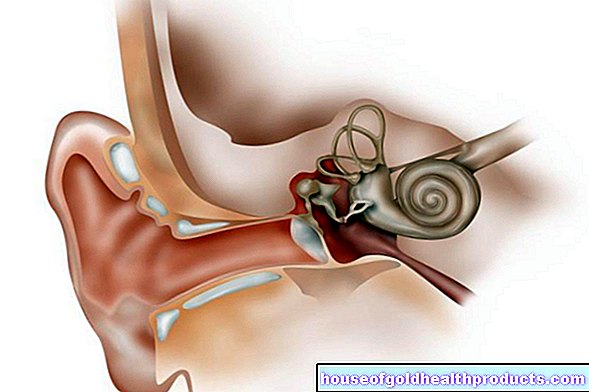




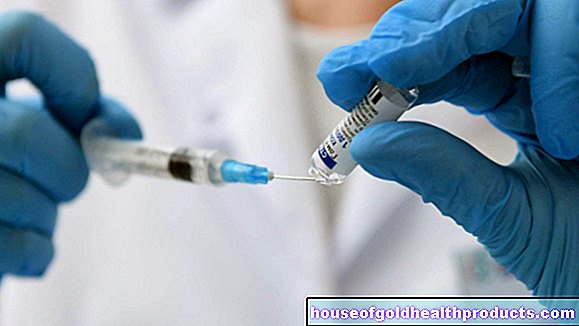

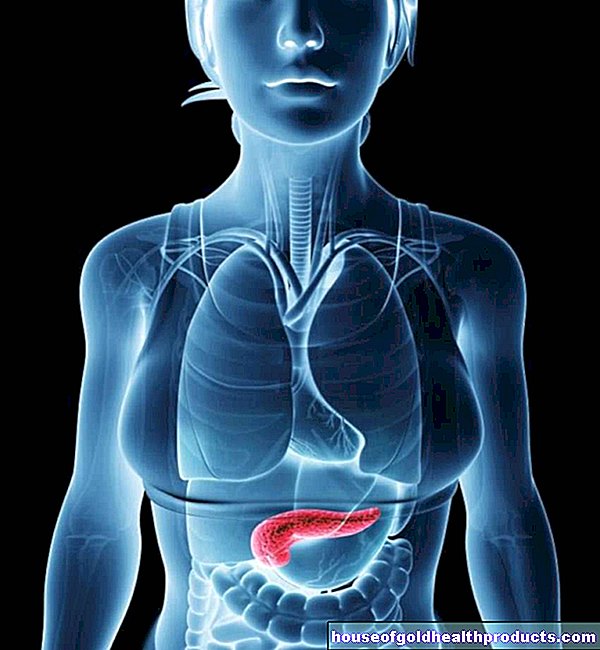
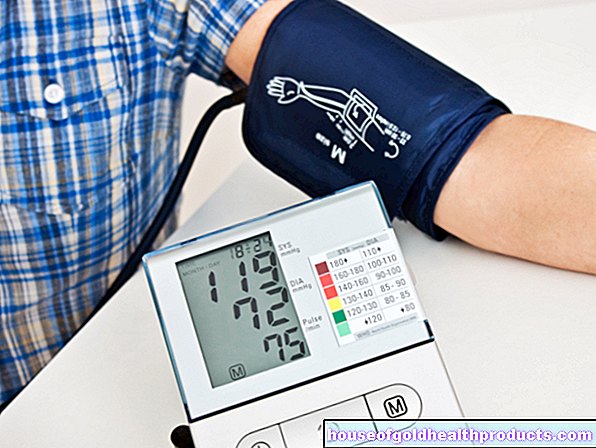
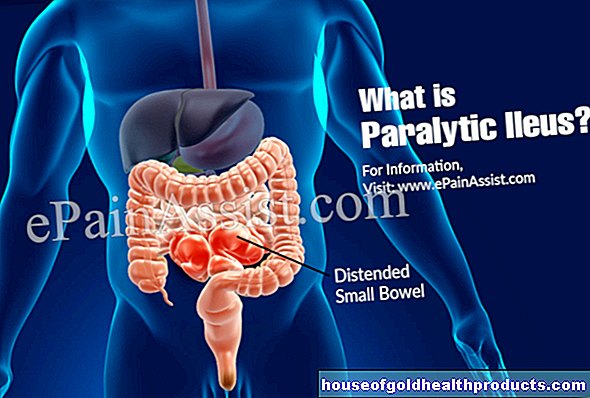

.jpg)

